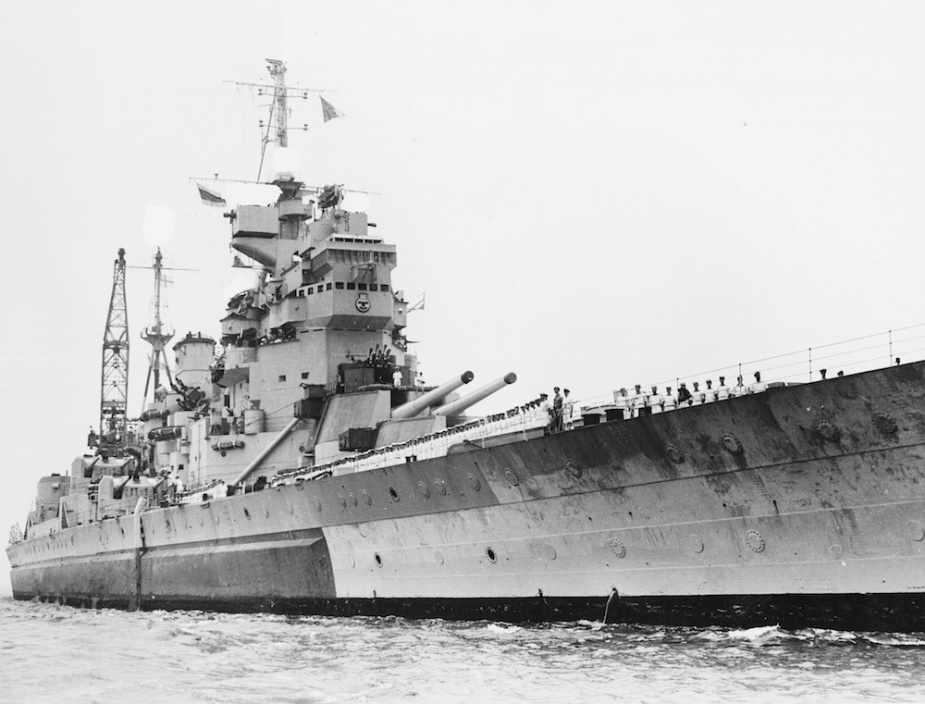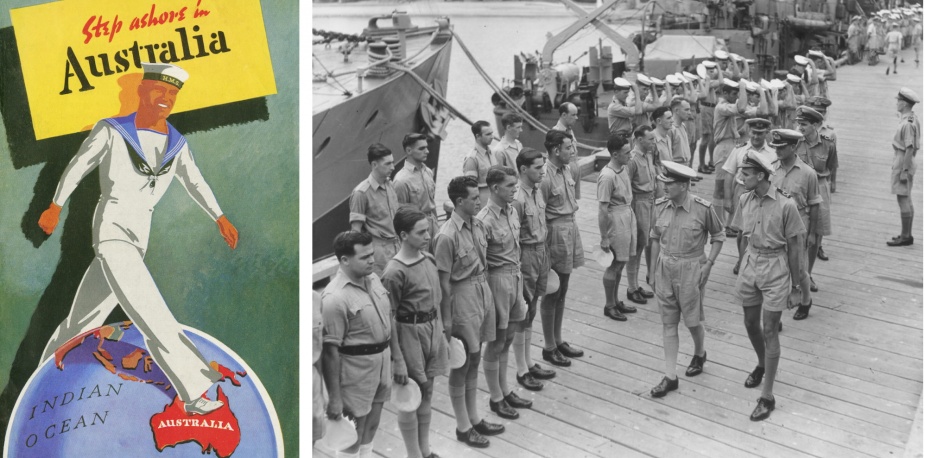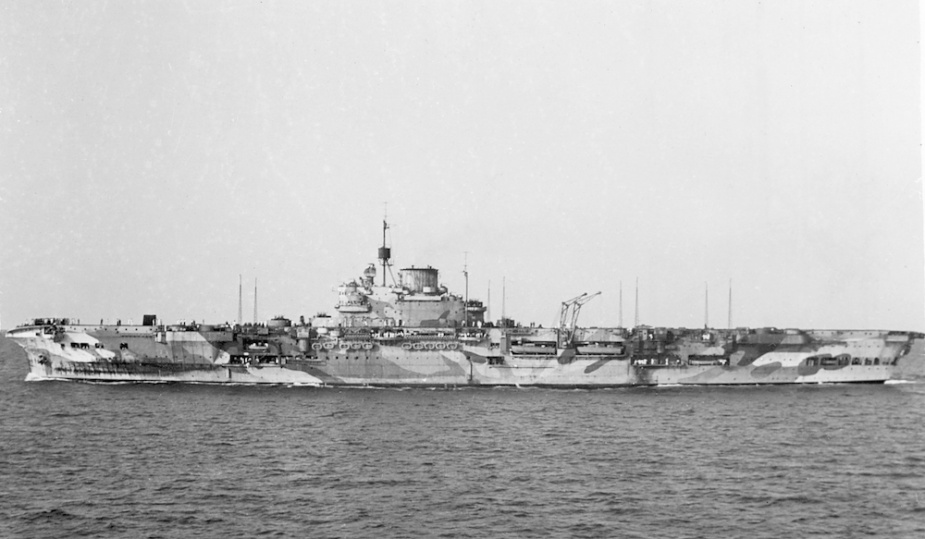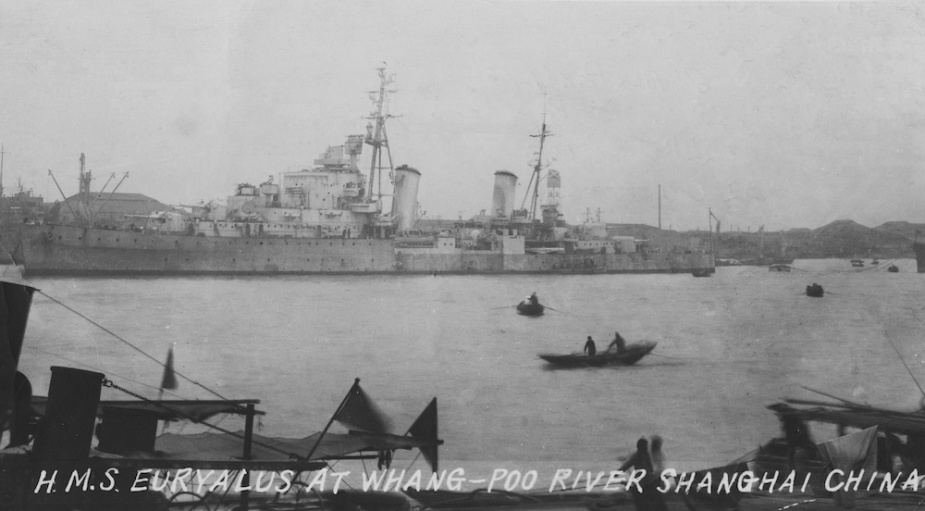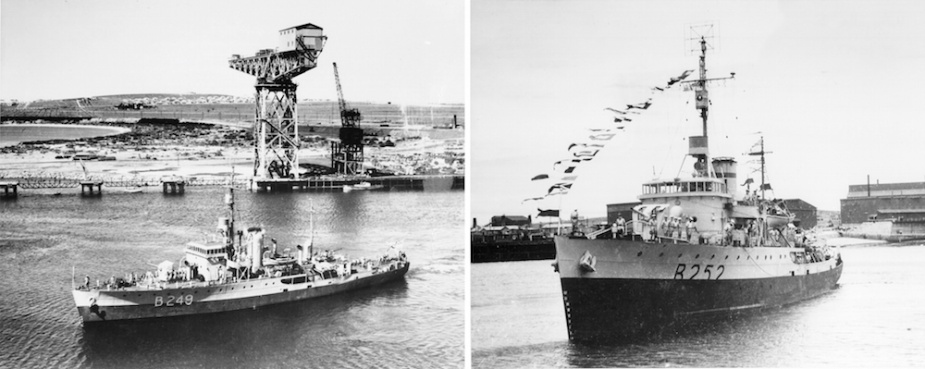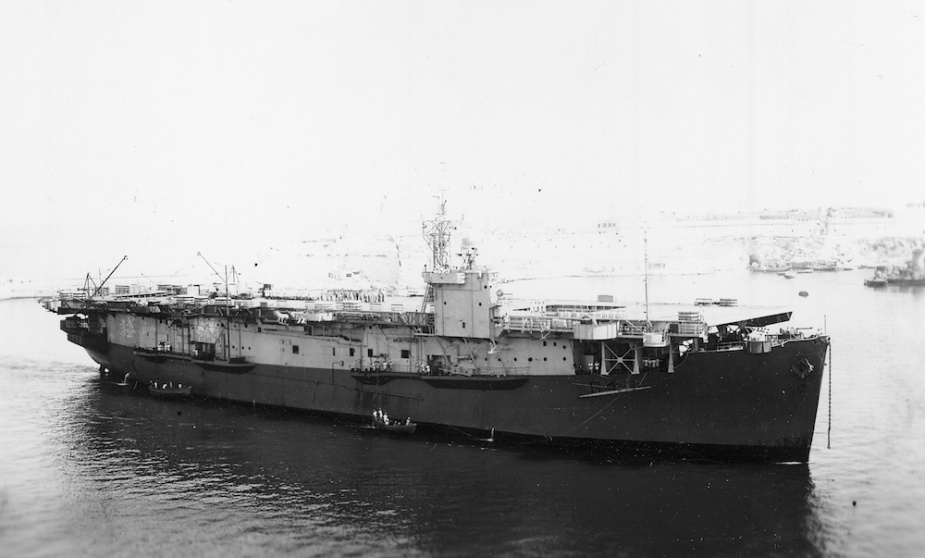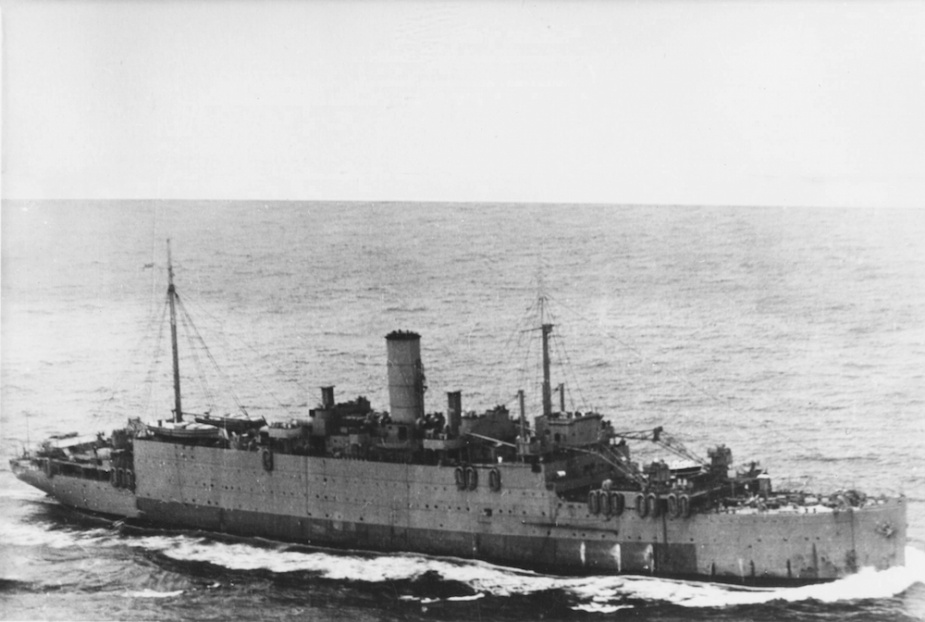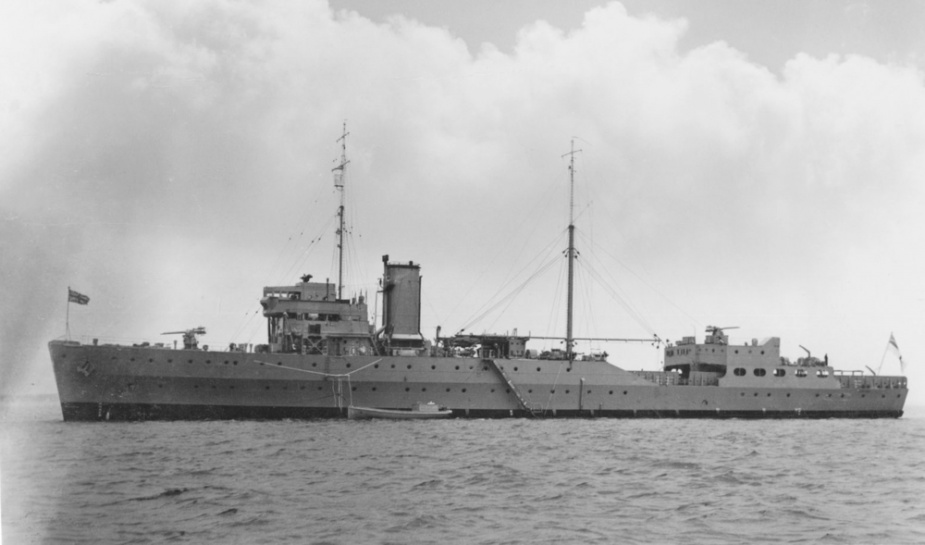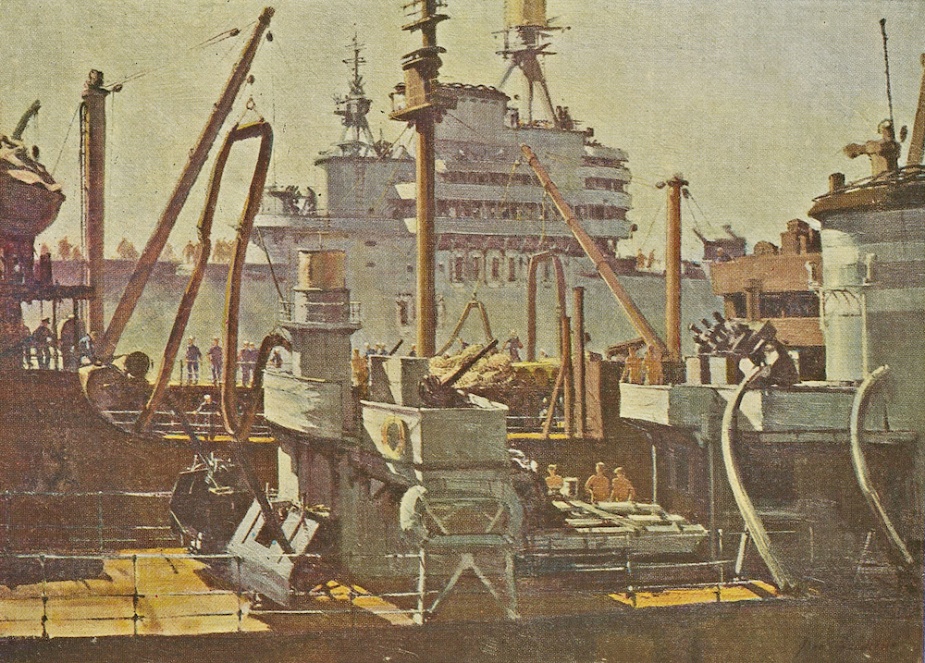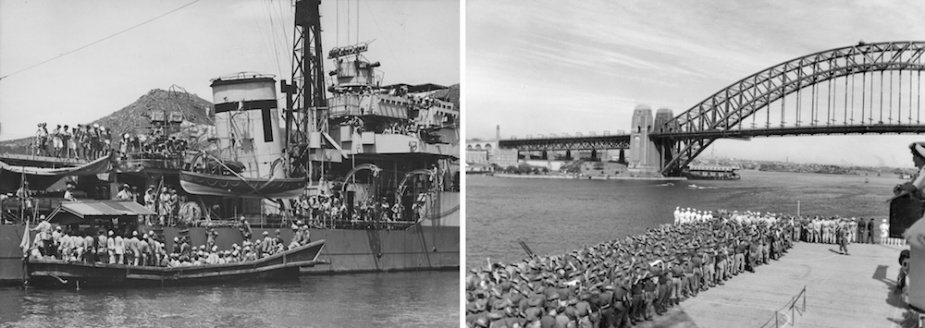The British Pacific Fleet
Inception
After the fall of Singapore and the subsequent raids on Ceylon in early 1942, the Imperial Japanese Navy (IJN) had expelled the Royal Navy (RN) from the Pacific and effectively restricted British naval operations to the fringes of the Indian Ocean. The British subsequently gave priority to the war in Europe, and the United States Navy (USN) took the lead against the IJN in the Pacific. The successful landings at Normandy and the advance on Germany convinced the British Prime Minister Winston Churchill that the time was right for a return of the White Ensign to Far Eastern waters. At the second Quebec conference in September 1944, the United States President Franklin D Roosevelt accepted Churchill's suggestion that a British fleet be used in the main theatre of operations against Japan. Subsequently the British Pacific Fleet (BPF) was formed on 22 November 1944 under Admiral Sir Bruce Fraser. As the island hopping Pacific war moved through the Philippines inexorably toward Japan, the British fleet was to operate from a main base to be established in Sydney, with an intermediate base at Manus in the Admiralty Islands.
The BPF remained in the Indian Ocean conducting operational training and re-equipping its units. This included substantial changes to British carrier and Fleet Air Arm doctrine, as the air operations in the restricted waters of the European theatre were replaced by large numbers of aircraft operating with a single purpose from several carriers simultaneously, as well as the introduction of superior American aircraft. As the BPF was to operate upon the great expanses of the Pacific Ocean it needed to support itself far from base, hence the fleet expanded its floating supply organisation, along the lines of the ‘Fleet Train’ of their American allies. In spite of a worldwide shortage of afloat support ships and the difficulties inherent in creating a large supply organisation some 12,000 miles away from home, the RN was able to assemble about 60 ships for the Fleet Train; a mixed group including many nationalities and vessels from the RN, the Royal Fleet Auxiliary, as well as numerous merchant ships from Britain and the European Allies. Unfortunately the BPF Train was short on fast tankers capable of refuelling ships at sea, and this subsequently became a serious handicap for the fighting ships. The BPF's first flagship was the battleship HMS Howe which sailed for Sydney with Admiral Fraser embarked in December 1944.
Arrival in Australia
While on their way to Australia, aircraft from the BPF successfully attacked two oil refineries at Palembang in eastern Sumatra inflicting heavy losses on the defending Japanese aircraft. When the fleet arrived at their main base in Sydney on 11 and 12 February 1945, its ranks were full of confidence for the future. Admiral Fraser, as Commander-in-Chief, established his headquarters ashore in Grenville House, William Street, Sydney, while his second-in-command, Vice Admiral Sir Bernard Rawlings, commanded the fleet at sea. Australia had been under ‘American occupation’ since 1942 and many Australians were delighted to see the British fleet. The people of Sydney raised £A200,000 by public subscription to build the British Centre staffed by over 4000 volunteers and which provided 1200 beds and at times 6000 meals each day. Three hundred young Australian women attended dances each night as hostesses, while some 12,500 homes in New South Wales offered hospitality to British sailors. Australia managed to perform a host of refit and repair facilities in support of the BPF from February 1945 until well after the end of the war. This included an emergency docking of Illustrious in the newly constructed Captain Cook Graving Dock at Garden Island Sydney, three weeks before the official opening ceremony. Not only did many Australian sailors serve in RN ships of the BPF, but by early March 1945 he Australian Navy had allocated all its N and Q Class destroyers and 18 of its Australian corvettes (minesweepers) to that fleet.
The Composition of the British Pacific Fleet on its initial formation - 1944
TF118 The Strike Fleet
Fleet Aircraft Carriers
1st Aircraft Carrier Squadron: HMS Indomitable, HMS Illustrious, HMS Victorious, HMS Indefatigable
Battleships
1st Battle Squadron: HMS King George V, HMS Howe
Cruisers
4th Cruiser Squadron: HMS Swiftsure, HMNZS Gambia, HMS Black Prince, HMS Argonaut, HMS Euryalus


